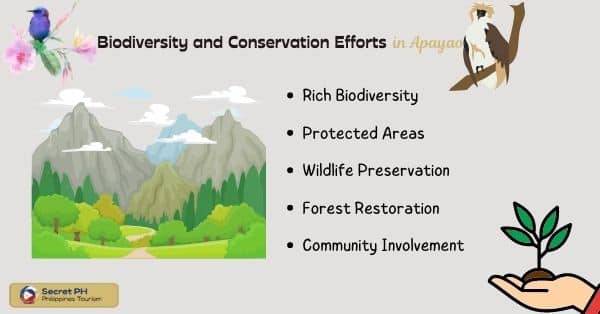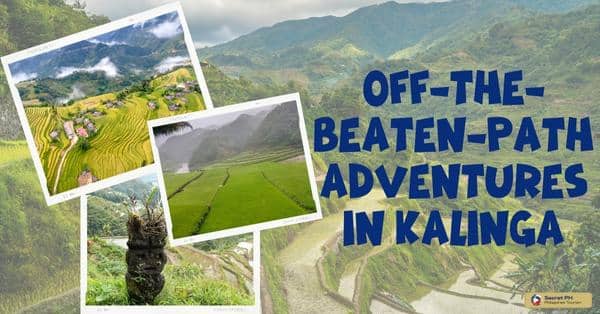Are you looking for an untouched paradise that is perfect for a serene getaway?
Discover Apayao, Cordillera’s Last Nature Frontier in the Philippines. With breathtaking landscapes, vibrant indigenous communities, and a commitment to sustainable tourism, Apayao offers an untouched paradise. Explore cascading waterfalls, and underground rivers, and immerse yourself in rich culture while preserving the environment for future generations.
Join us as we explore this unique destination and discover why it’s the perfect spot for a once-in-a-lifetime experience. So come along and adventure through Apayao – you won’t regret it!

Introduction to Apayao: A Hidden Gem in Cordillera
Nestled in the northern part of the Philippines is a hidden gem waiting to be discovered – Apayao. This province in the Cordillera region is a nature lover’s paradise with its stunning natural landscapes and diverse flora and fauna.
From the cascading rapids and waterfalls to the lush green forests and rice paddies. Apayao offers a serene escape from the hustle and bustle of city life. Not only is it a great destination for outdoor enthusiasts. But it is also a culturally rich province with a fascinating history and unique traditions.
Pay a visit to the Kalinga tribes and witness their intricate tattoos and traditional dances. Venture into the towns and experience the warmth and hospitality of the locals. You’ll soon realize that Apayao is more than just a hidden gem, but a true Philippine treasure.

Biodiversity and Conservation Efforts in Apayao
Biodiversity plays a vital role in maintaining ecological balance and the overall health of the planet. The Philippines, with its immense diversity in flora and fauna, is at the forefront of global efforts to preserve biodiversity. Apayao, a province in the Cordillera Administrative Region of the country, is home to a wide variety of rare and endangered species of plants and animals.

Rich Biodiversity
Apayao is home to a diverse range of flora and fauna, including endemic and endangered species. Its lush forests, rivers, and mountains harbor a unique ecosystem that deserves protection.
Protected Areas
Apayao boasts several protected areas, such as the Calanasan Wildlife Sanctuary and Apayao Protected Landscape and Seascape. These areas play a crucial role in conserving the region’s biodiversity and promoting sustainable development.
Wildlife Preservation
Conservation efforts in Apayao focus on safeguarding the habitat of various wildlife species. Initiatives include monitoring and research programs, anti-poaching measures, and promoting community awareness about the importance of protecting local wildlife.
Forest Restoration
Recognizing the significance of forests in maintaining biodiversity, Apayao implements reforestation projects to restore degraded areas and ensure the long-term sustainability of the ecosystem. Tree planting campaigns and sustainable forest management practices are vital components of these efforts.
Community Involvement
Conservation efforts in Apayao involve engaging local communities and indigenous groups as key stakeholders. By promoting community-based initiatives, sustainable livelihoods, and traditional ecological knowledge, Apayao fosters a sense of ownership and responsibility among its residents for the preservation of their natural heritage.
By taking an active role in preserving their natural heritage, the people of Apayao are setting an example for the world to follow.

Exploring Apayao’s Stunning Natural Landscapes
Located in the northernmost part of the Philippines lies a hidden gem waiting to be explored – Apayao’s stunning natural landscapes. Its picturesque views offer a haven for adventure seekers and nature lovers alike.
From the towering peaks of Mt. Kapugan to the refreshing waters of Marag Valley, Apayao boasts a variety of breathtaking sceneries waiting to be discovered. Take on a challenging hike up Mt. Kapugan, known as the “Roof of Apayao,” and be rewarded with an exhilarating view of the province below.
For a more relaxed adventure, take a dip in the crystal-clear waters of Marag Valley and be amazed by the natural beauty surrounding you. With such magnificent sights to behold, Apayao is definitely a must-see destination for anyone visiting the Philippines.

Cultural Heritage and Indigenous Communities in Apayao
Apayao, a province in the northern part of the Philippines, is home to several indigenous communities that have played a significant role in preserving the country’s cultural heritage.
Isnag/Itneg
The Isnag or Itneg people are one of the major indigenous groups in Apayao. They have a rich cultural heritage and are known for their traditional weaving, intricate basketry, and skill in farming.
They reside in mountainous areas and practice subsistence agriculture, maintaining their customs, beliefs, and rituals.

Kalinga
The Kalinga tribe is renowned for its exceptional craftsmanship, particularly in tattooing and intricate handwoven textiles. They have a strong warrior culture and are known for their traditional peace pacts called “bodong.”
Kalinga communities are often nestled in mountainous regions and showcase their vibrant cultural traditions through dances, music, and rituals.

Ibanag
The Ibanag people are primarily found in the northern part of Apayao. They are known for their agricultural practices, including rice farming and vegetable cultivation.
The Ibanag have a rich folklore and are adept at performing traditional dances and music, often incorporating bamboo instruments in their performances.

Gaddang
The Gaddang tribe is primarily located in the eastern part of Apayao. They are known for their skill in pottery, weaving, and metalworking.
The Gaddang people have a unique way of dressing, with women wearing colorful wrap around skirts and men donning traditional garments adorned with intricate beadwork and embroidery.

Malaweg
The Malaweg people are a smaller indigenous group in Apayao. They have a deep connection with the land and engage in subsistence farming and fishing.
The Malaweg have a close-knit community and preserve their traditional practices, including storytelling, music, and dance.

Dumagat
The Dumagat tribe, also known as the “river people,” reside near the rivers and forests of Apayao. They have a strong affinity for nature and practice sustainable hunting and gathering techniques.
The Dumagat are skilled in making crafts from forest materials and are known for their unique musical instruments, such as bamboo flutes and drums.

Sustainable Tourism in Apayao: Balancing Development and Environmental Preservation
Apayao, a province in the Philippines, is an ideal destination for nature enthusiasts who are looking for a unique travel experience. Home to breathtaking natural wonders, rich culture, and warm hospitality, the province is gaining popularity as a sustainable tourism destination that balances development and environmental preservation.
As tourists increasingly seek more responsible and sustainable travel options, Apayao has responded with community-driven initiatives that aim to support the local economy while protecting the environment.
From eco-tourism activities such as hiking and trekking to the promotion of traditional crafts and cuisine, sustainable tourism in Apayao is providing a positive impact on both visitors and locals alike.
By embracing sustainable tourism, Apayao is showcasing its commitment to preserving its natural heritage for future generations while offering visitors an immersive and authentic experience of the Philippines.

In conclusion
In recent years, the province of Apayao in the Philippines has gained recognition as Cordillera’s Last Nature Frontier. This vast part of Luzon Island is home to breathtaking natural landscapes and indigenous cultures that have captivated both locals and tourists alike.
From its rolling hills, dense forests, and pristine rivers to the centuries-old customs practiced by its people, Apayao offers a unique experience that is rich in both history and nature. As this hidden gem becomes more accessible to visitors.
It is important to remember the significance of responsible tourism in preserving its delicate environment and supporting the local community. And so, as we bid farewell to Cordillera’s Last Nature Frontier, we hope that it will continue to thrive as a sustainable and enriching destination for generations to come.








